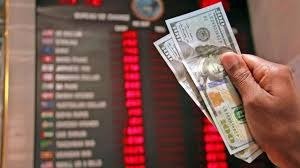
Kenya has witnessed a significant shift in its currency dynamics, with the Kenyan Shilling depreciating against the US Dollar – once again.
Latest figures from the Central Bank of Kenya (CBK) show the shilling is trading at 135 units to the dollar.
It last exchanged at 135 on March 19.
It marks a stark contrast from the highs of 163 units before the issuance of the new Eurobond.
The current exchange rate reflects unfavourable conditions for the shilling within the credit market, as the dollar appears to regain strength, potentially due to Kenya’s lower export-to-import ratio.
Why The Shilling is Falling Again
As a net importer, Kenya’s reliance on imported goods, including basic commodities, has made it challenging to exert control over the dollar.
This imbalance has necessitated government borrowing to sustain import bills, which are predominantly dollar-denominated, pushing high the sovereign debt.
This borrowing trend has a cascading effect on the economy, influencing the purchasing power of commodities and contributing to inflationary pressures.
What this means is that importers, facing the need to purchase commodities in dollars, exert additional strain on the Kenyan currency.
The Eurobond Buyback and Its Implications
The shilling had shown signs of strengthening over the past two months, a phenomenon linked to the February Eurobond buyback.
Also Read: Kenya’s Eurobond Issue Attracts Over $5 Billion
However, Ben Mulwa, an economic analyst who spoke to a local media outlet said the move is unsustainable in the long run.
The February Eurobond buyback was a strategic move by the Kenyan government to manage its debt obligations.
The buyback led to a temporary appreciation of the shilling, which gained value against the dollar5.
This appreciation reduced the overall debt and debt service costs, saving Kenya over Ksh.800 billion in debt.
However, Kenya’s persistent deficits have led to a climbing public debt, which stood above 70% of GDP in 2023, with interest payments consuming nearly 30% of government revenues.
The Ripple Effect on Inflation and Purchasing Power
The depreciation of the shilling has a direct impact on inflation.
As importers pass on the higher costs of purchasing dollars to consumers, the general cost of living rises.
It is fuled by Kenya’s status as a net importer, where even basic commodities are bought from abroad.
While the Eurobond buyback has provided temporary relief, the long-term sustainability of a strong shilling hinges on increasing exports and improving the trade balance.







I’m extremely inspired along with your writing skills and also with the layout for your weblog. Is that this a paid subject matter or did you modify it yourself? Either way stay up the nice high quality writing, it is rare to peer a great blog like this one these days!